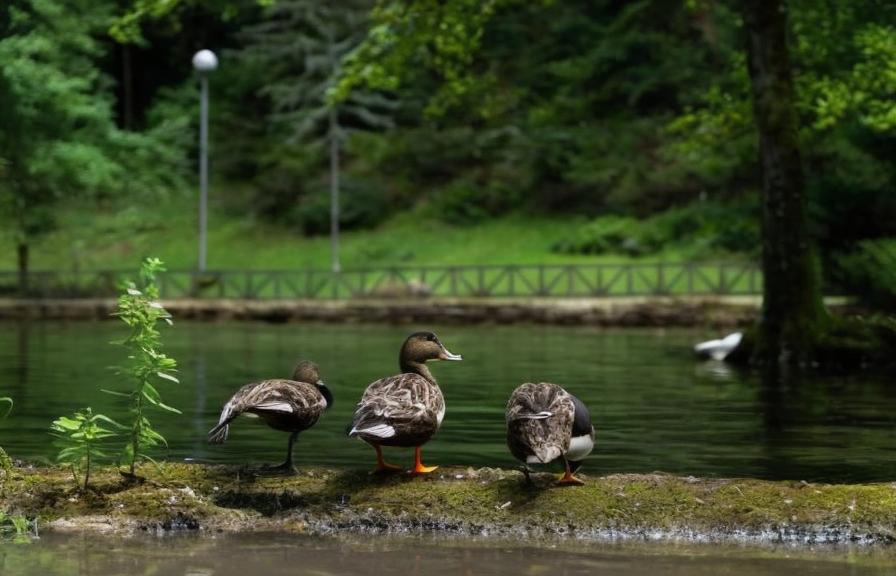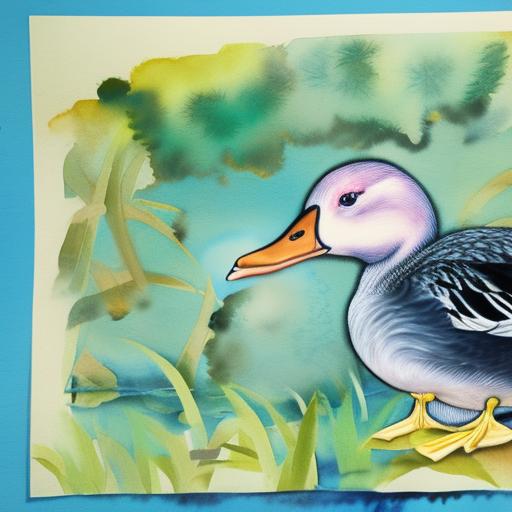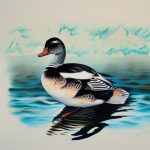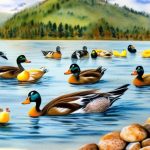In 2017, the duck breeding population in North America experienced both challenges and successes. The annual survey conducted by the U.S. Fish and Wildlife Service and Canadian Wildlife Service revealed important insights into the status of duck populations across the continent. The survey, which covers more than 2 million square miles of waterfowl habitat, provides crucial data for conservation efforts and wildlife management. The findings from the 2017 survey indicated that the overall duck breeding population was estimated at 47.3 million, which was a slight decrease from the previous year. Despite this slight decline, the numbers were still above the long-term average, providing some optimism for the future of duck populations.
The survey also highlighted regional variations in duck breeding populations, with some areas experiencing increases while others saw declines. This variation underscores the complex nature of duck population dynamics and the need for targeted conservation efforts. Overall, the 2017 survey served as a valuable tool for understanding the current state of duck breeding populations and identifying areas for conservation intervention.
Key Takeaways
- Duck breeding populations in 2017 showed both increases and decreases across different species.
- Factors influencing duck breeding populations include habitat loss, climate change, and hunting pressure.
- Geographic trends in duck breeding populations show variations in population sizes and distribution across different regions.
- Conservation efforts for duck breeding populations include habitat restoration, wetland protection, and hunting regulations.
- The implications of duck breeding population trends include impacts on ecosystem health and waterfowl hunting opportunities.
- The future outlook for duck breeding populations depends on continued conservation efforts and adaptive management strategies.
Changes in Duck Breeding Populations by Species
The 2017 survey revealed interesting trends in duck breeding populations by species. Mallards, the most abundant duck species in North America, showed a slight decrease in population compared to the previous year. However, their numbers remained well above the long-term average, indicating a relatively stable population. Other species, such as northern pintails and blue-winged teal, experienced mixed results, with some populations showing increases while others declined. The survey also highlighted the importance of understanding species-specific population dynamics in order to implement effective conservation measures.
One notable success story from the 2017 survey was the increase in redhead duck populations, which reached record numbers. This increase was attributed to favorable breeding conditions in key nesting areas, demonstrating the impact of environmental factors on duck populations. Overall, the changes in duck breeding populations by species underscored the need for targeted conservation efforts that take into account the unique characteristics and habitat requirements of each species.
Factors Influencing Duck Breeding Populations
Several factors influence duck breeding populations, including habitat loss, climate change, hunting pressure, and predation. Habitat loss, in particular, has been a significant threat to duck populations, as wetlands and other critical nesting areas have been degraded or destroyed due to human development. Climate change has also had an impact on duck populations, altering migration patterns and affecting breeding success.
Hunting pressure is another factor that can influence duck populations, as unsustainable hunting practices can lead to population declines. However, responsible and regulated hunting can also play a role in population management and conservation efforts. Predation, both natural and human-induced, can also affect duck populations, especially during the vulnerable breeding season.
In addition to these factors, environmental conditions such as droughts or floods can have a significant impact on duck breeding populations. Understanding and addressing these factors is crucial for effective conservation and management of duck populations.
Geographic Trends in Duck Breeding Populations
The 2017 survey revealed important geographic trends in duck breeding populations, with some regions experiencing increases while others saw declines. The Prairie Pothole Region, often referred to as the “duck factory” due to its importance as a breeding ground for waterfowl, showed mixed results in 2017. While some areas within the region experienced increases in duck populations, others saw declines, highlighting the need for targeted conservation efforts in specific locations.
The boreal forest region also played a significant role in duck breeding populations, with certain areas showing stable or increasing numbers of ducks. However, this region also faced challenges such as habitat loss and climate change, which could impact future population trends. Understanding these geographic trends is essential for developing conservation strategies that address the unique needs of different regions and habitats.
The survey also highlighted the importance of coastal areas as critical habitat for certain duck species. Coastal wetlands provide important nesting and feeding grounds for ducks, and their conservation is crucial for maintaining healthy duck populations. Overall, the geographic trends in duck breeding populations underscored the need for targeted conservation efforts that take into account regional variations in population dynamics.
Conservation Efforts for Duck Breeding Populations
Conservation efforts for duck breeding populations encompass a wide range of strategies aimed at protecting and enhancing critical habitat, managing hunting practices, and addressing environmental threats. One key conservation strategy is the protection and restoration of wetlands, which are essential for nesting and feeding ducks. This includes initiatives to conserve existing wetlands and create new ones through habitat restoration projects.
Another important aspect of conservation efforts is the management of hunting practices to ensure sustainable harvest levels that do not negatively impact duck populations. This includes setting regulations on bag limits, hunting seasons, and protected areas to prevent overexploitation of duck populations.
In addition to habitat protection and hunting management, conservation efforts also focus on addressing environmental threats such as climate change and pollution. This includes initiatives to mitigate the impacts of climate change on duck populations and reduce pollution in critical habitat areas.
Collaboration between government agencies, conservation organizations, and local communities is essential for successful conservation efforts. By working together, stakeholders can implement comprehensive conservation strategies that address the complex challenges facing duck breeding populations.
Implications of Duck Breeding Population Trends

The trends in duck breeding populations have important implications for both wildlife management and ecosystem health. Healthy duck populations are indicative of well-functioning wetland ecosystems, as ducks play a crucial role in maintaining wetland habitats through their feeding and nesting behaviors. Therefore, declines in duck populations can signal broader ecological imbalances that may impact other species and ecosystem functions.
Furthermore, duck populations are an important resource for both recreational and subsistence hunting, as well as ecotourism. Declines in duck populations can have economic implications for local communities that rely on these activities for livelihoods and cultural traditions.
From a conservation perspective, understanding population trends is crucial for identifying areas that require intervention and allocating resources effectively. By monitoring population trends over time, wildlife managers can assess the effectiveness of conservation measures and adapt strategies as needed to ensure the long-term sustainability of duck populations.
Future Outlook for Duck Breeding Populations
The future outlook for duck breeding populations depends on a variety of factors, including habitat conservation efforts, climate change mitigation, and sustainable hunting practices. Continued investment in wetland conservation and restoration is essential for maintaining healthy duck populations, as wetlands are critical habitat for nesting and feeding ducks.
Addressing the impacts of climate change on duck populations will also be crucial for their long-term survival. This includes initiatives to protect coastal areas from sea-level rise and storm surges, as well as efforts to mitigate the effects of changing weather patterns on nesting success and migration routes.
Sustainable hunting practices will play a role in shaping the future outlook for duck breeding populations. By implementing regulations that ensure sustainable harvest levels and protect vulnerable populations, wildlife managers can help maintain healthy duck populations while also supporting traditional hunting activities.
Overall, the future outlook for duck breeding populations will depend on our ability to address the complex challenges facing these iconic waterfowl species. By implementing comprehensive conservation strategies that take into account habitat protection, climate change mitigation, and sustainable hunting practices, we can work towards ensuring a bright future for duck populations across North America.
Discovering the latest trends in duck breeding populations is crucial for anyone involved in poultry farming. As reported in a recent study by Poultry Wizard, understanding the dietary needs of ducks is essential for maintaining healthy breeding populations. The article “What Should You Feed Ducks?” provides valuable insights into the nutritional requirements of ducks, offering practical advice on how to optimize their diet for successful breeding. By implementing the recommendations outlined in this article, poultry farmers can contribute to the overall health and sustainability of duck populations. (source)
FAQs
What are the trends in duck breeding populations in 2017?
In 2017, the overall duck breeding population in the United States was estimated at 47.3 million, which is 34% above the long-term average. This marked an increase of 7% from the 2016 estimate.
Which duck species showed significant changes in breeding populations in 2017?
The mallard population was estimated at 11.4 million in 2017, which was a 9% increase from the 2016 estimate. Other species such as gadwall, green-winged teal, and blue-winged teal also showed increases in breeding populations.
Were there any duck species that showed a decrease in breeding populations in 2017?
Yes, the northern pintail population decreased by 10% from the 2016 estimate, and the northern shoveler population decreased by 5% from the 2016 estimate.
What factors contribute to the trends in duck breeding populations?
Factors such as habitat conditions, weather patterns, and conservation efforts can all influence the trends in duck breeding populations. Changes in these factors can impact the availability of suitable nesting and breeding grounds for ducks.
How are these trends in duck breeding populations important for conservation efforts?
Monitoring and understanding the trends in duck breeding populations is crucial for conservation efforts. It helps wildlife managers and conservationists make informed decisions about habitat management, hunting regulations, and other measures to ensure the long-term sustainability of duck populations.
Meet Walter, the feathered-friend fanatic of Florida! Nestled in the sunshine state, Walter struts through life with his feathered companions, clucking his way to happiness. With a coop that’s fancier than a five-star hotel, he’s the Don Juan of the chicken world. When he’s not teaching his hens to do the cha-cha, you’ll find him in a heated debate with his prized rooster, Sir Clucks-a-Lot. Walter’s poultry passion is no yolk; he’s the sunny-side-up guy you never knew you needed in your flock of friends!







